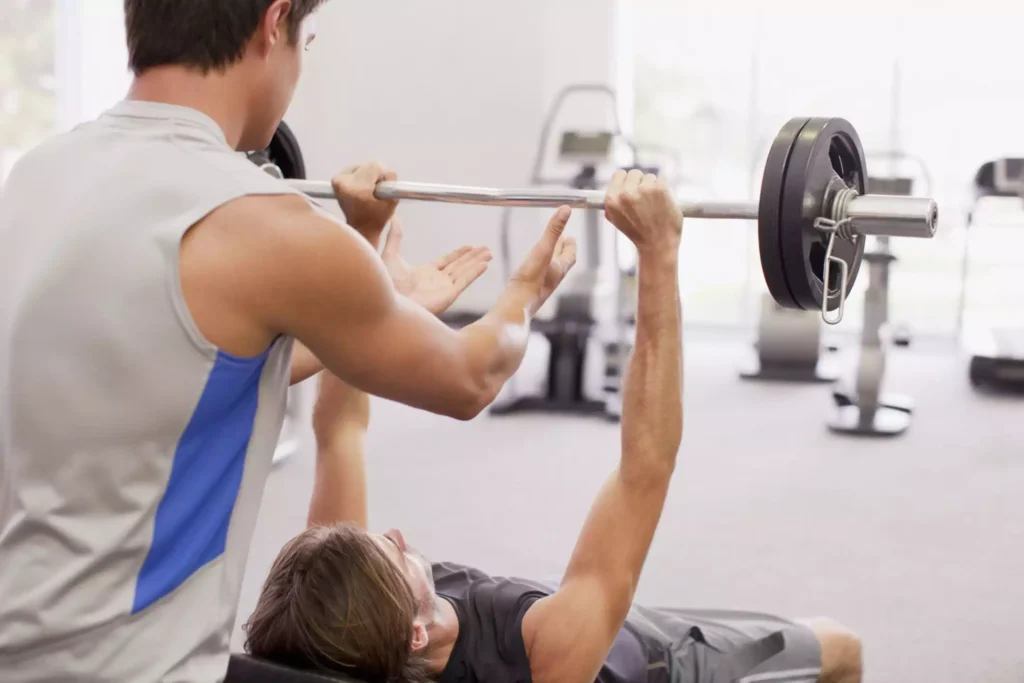Spotting means help from one or more assistants and can come from a training partner or from anyone who is in the gym at the time and who is willing and able to spot you. While trainees working out solo at home are not going to have a spotter, everyone training at a public gym can usually get a spotter when needed. Good spotting helps your training in three important ways:
- To assist you with lifting the weight when you can lift it no further, e.g., when the bar stalls during a bench press ascent.
- To provide the minimum assistance to ensure that the last rep of a set is done in good form. In this case, you probably could get the rep out under your own power but your form would break down. Consider the last rep of a set of bench presses when one hand gets slightly above the other, and you feel like increasing the arch in your back in order to get that rep out. This is a dangerous situation. A spotter can make the difference between safety and injury.
- During a set you may forget a key point of form. A spotter can alert you to key form pointers while ensuring that you put forth maximum effort. You need excellent exercise form and intensity of effort.
The spotter must have an alert eye and be ready at all times of a set. He should spot with an arched lower back, not a rounded back—the spotter must be safety conscious and use good lifting form himself. He should be particularly alert when the lifter begins to struggle and good form starts to break down. An alert, serious and strong spotter should especially be present for squatting, bench pressing, and pressing, including all dumbbell pressing.
For effective spotting, the help must be applied with two hands in a balanced way. For example, spotting the bench press by putting one hand under the center of the bar will lead to the bar tipping, as will using two hands but not applying them to the bar symmetrically.
After an assisted rep, the trainee is going to be very fatigued. The spotter must help the lifter to return the bar to the weight saddles at the end of a set. If two spotters are involved, there must be excellent communication. Take the squat as an example. If there is not excellent communication, one spotter could take one end before the other spotter grabs his end of the bar. If one spotter shouts “Take it!” then the other must respond even if he thinks the assistance could have been delayed a little.

